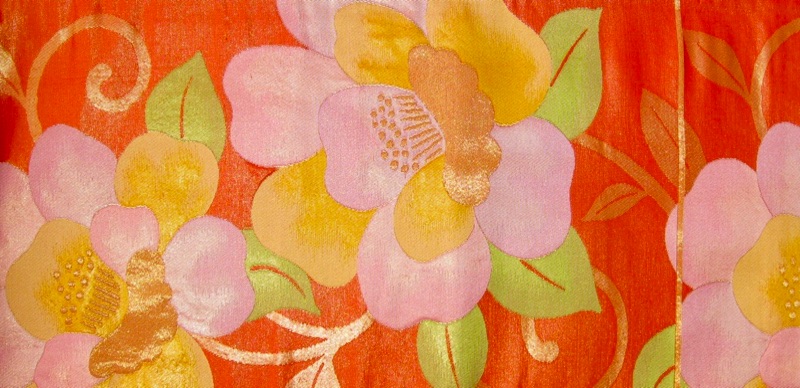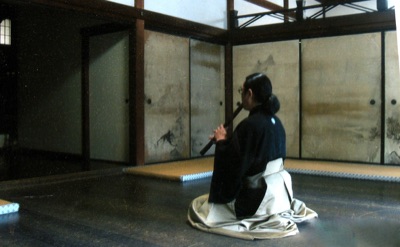
Hōzan Murata has been an established senior shakuhachi maker and player in the Kyoto/Osaka area for decades. He performs regularly in major hogaku presentations, with Yamamoto Hõzan, the National Living Treasure, and Miyoshi Genzan, his life-long teacher, as well as having a busy teaching life. As a professional performer he engages with variety of genres. He performs for the Kyoto Minami-za Kabuki theatre, for major minyo concerts as well as performances in the Imperial villas. He travels to Brazil, the Lebanon, Taiwan and the US for concert tours. His flutes are in the hands of many of the most accomplished players in Japan, and now the world.
Hõzan Murata studied under Miyoshi Genzan from the unusually early age of 16. Age 19 he received his Junishihan license. Aged 22, he received his Shihan license and at Age 29, his Dai-shihan license.
In 1974 he spent 8 months traveling Japan on foot as a komuso. This was an important part of his spiritual path to shakuhachi and a great excuse to play shakuhachi all day long, every day.
He has made shakuhachi all his professional life, beginning in 1971 with four years of study under Tamai Chikusen, and another four years study with Nagahiro Shinzan from 1975.
Hõzan Murata has a strong signature style: his flutes are large bore and lightweight. He makes not only jiari flutes but also big bore jinashi chokan flutes of varying lengths. The jiari 1.8s are easy to blow and accommodate a lot of air pressure. Tonally they are chameleon-like: they can be played to sound warm and soft, hard and bright and everything in between. Playing neutrally, they tend towards warm and rich. So they have a wide range of application, from honkyoku to sankyoku and modern pieces. He uses madake harvested in Fukuchiyama, Shouzan and Kameoka.
Hõzan-sensei's studio is extraordinary to behold. He lives in an old house and his studio fusuma doors are papered with beautiful calligraphy and paintings.



In his own words:
"Shakuhachi is not an easy instrument, however this difficulty is why it is so attractive! There is only a small difference between shakuhachi being very difficult and being very attractive. 80 percent of its sound quality is made by the player, only 20 percent is in the domain of the flute. With good bamboo and good construction you get good tone color and good pitch control, but the rest is up to how the player holds his breath in his lungs, how he maintains pressure in his mouth cavity, how he uses the muscles of his cheeks and tongue, and how he concentrates the flow of air, and at what angle across the utaguchi. So most of the sound coming from a shakuhachi is due to body mechanics. I can't think of any other instrument which has such an intimate relationship with the body.
Shakuhachi sound can be compared to the human voice: it can never produce exactly the same sound twice because the tongue, mouth, flute relationship is subtle and always changing. An excellent player will find his sound quality changing from moment to moment throughout the day, sometimes good, sometimes not so good. Everyone experiences this frustrating phenomenon and we often blame it on the flute!
The neophyte shakuhachi player is like a new-born baby just beginning to use its vocal cords. For the first six months nothing very intelligible comes out, but with a lot of yelling and experimentation, words finally emerge. Shakuhachi players go through a trial by fire!
My first love is performance, but making shakuhachi feeds performance and performance feeds making. That is why I apprenticed to Tamai Chikuzen. That is also why I did kadotsuke (begging) as a komuso, to be able to blow all day long.
Life as a komuso
I started shakuhachi in my second year of high school. My father was a shakuhachi player. My mother worried about me during my komuso journeys. Each day she would make kagezen ('shadow' meal) for me, in my absence, and place it in front of the empty space at her table. Traveling as a komuso is challenging. My feet and my back got very sore. Sometimes I slept on the roof of bus stops. Often I played shakuhachi for animals in the fields. Horses are quite gentle, however cows sometimes got startled by the sound of my shakuhachi, and charged! There was some anxiety about what tomorrow would bring, but eventually I learned to be concerned with only the present. Often I was put up in temples. As I travelled around the country I contacted players in each community and asked if I could respectfully sit and enjoy their sound for a short visit. Often I ended up staying the night!
As a komuso one gets all kinds of responses: from people yelling and throwing stuff, to being showered with blessings. I had some difficulty with regional dialects, occasionally finding it impossible to understand or be understood. Some individuals even threw salt at me to ward off 'evil spirits'. Everywhere though, there was a commonality of human concerns and emotions that I cared for".